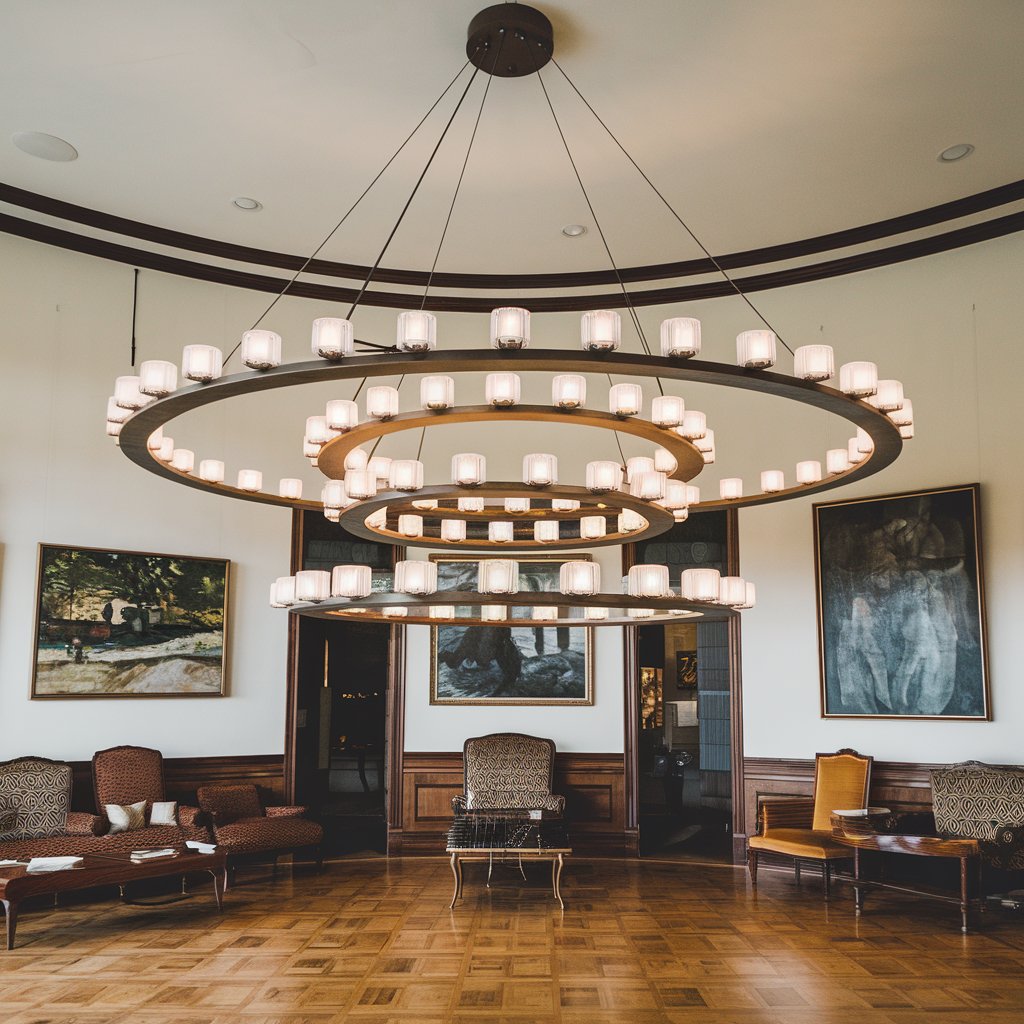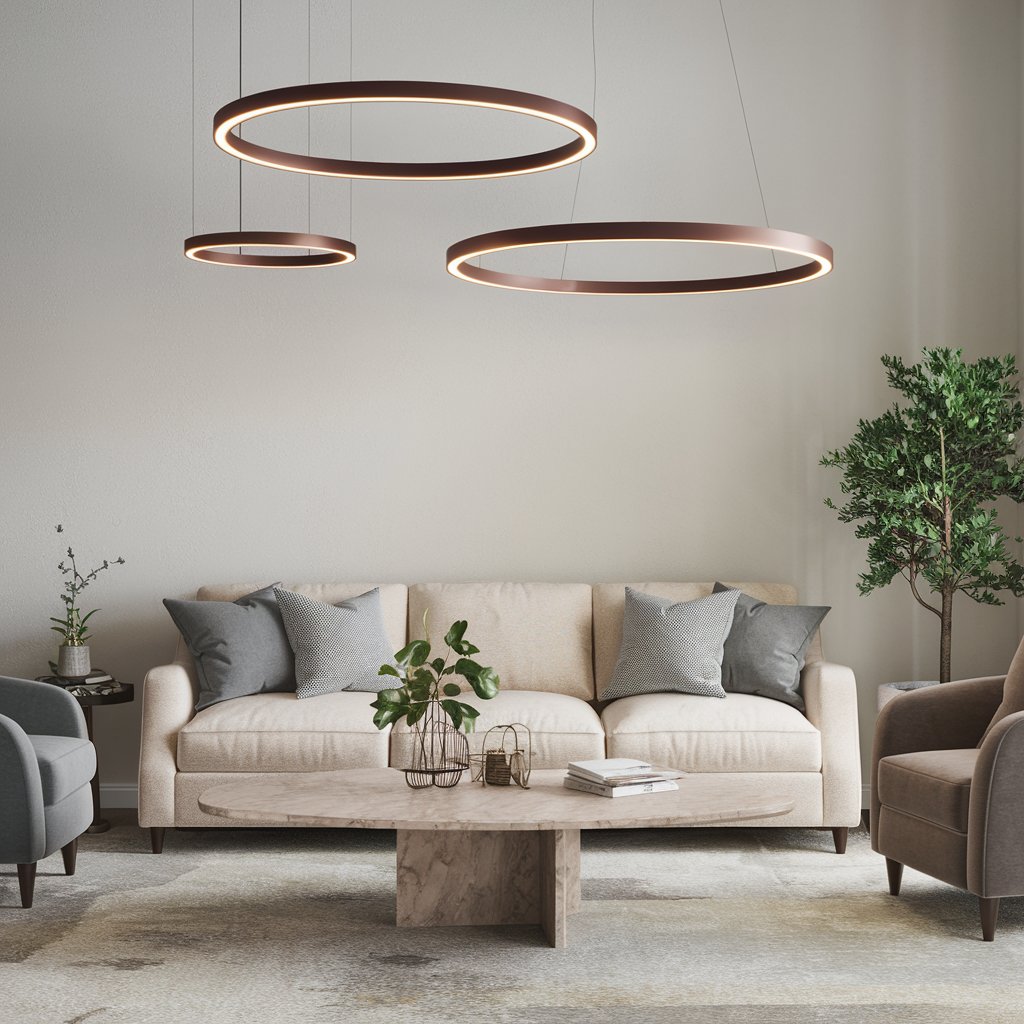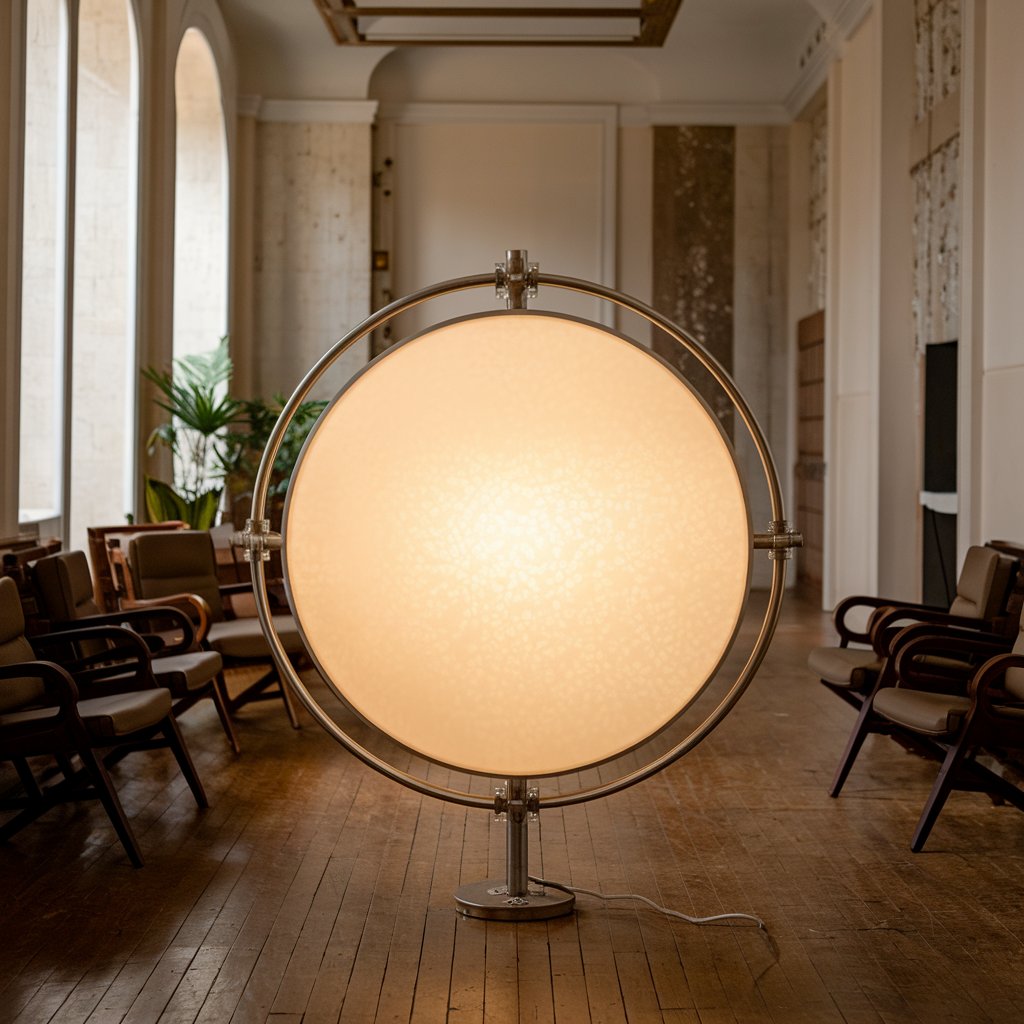Circular Light Fixtures: A Complete Guide For You & Ideas
Illuminating your space with style and functionality is a key element of interior design, and circular light fixtures offer a unique blend of aesthetics and practicality. This guide dives deep into the world of circular lighting, exploring various types, their advantages and disadvantages, installation considerations, and much more. You’ll learn how to choose the perfect…
Illuminating your space with style and functionality is a key element of interior design, and circular light fixtures offer a unique blend of aesthetics and practicality. This guide dives deep into the world of circular lighting, exploring various types, their advantages and disadvantages, installation considerations, and much more. You’ll learn how to choose the perfect circular light fixture for your home or office, regardless of your design style or technical expertise. We’ll cover everything from the basics to advanced applications, ensuring you have all the information you need to make informed decisions.
Circular light fixtures, as the name suggests, are lighting units with a circular or round shape. This simple yet versatile design element allows for a wide range of styles and applications, from sleek modern pendants to ornate traditional chandeliers. The circular form itself can evoke
different feelings depending on the design – a minimalist circular pendant might feel modern and clean, while an elaborate circular chandelier might suggest opulence and tradition.
Types of Circular Light Fixtures

Pendant Lights
Pendant lights are a popular choice for many homes. They hang from the ceiling and are often used as a focal point in a room. Circular pendant lights come in various sizes, materials (e.g., glass, metal, wood), and styles, making them adaptable to different interiors.
Flush Mount Lights
Flush mount circular lights sit directly against the ceiling, ideal for rooms with lower ceilings where a pendant light might hang too low. They provide ample illumination without taking up much vertical space. Common materials include acrylic, metal, and glass.
Semi-Flush Mount Lights
Semi-flush mount lights offer a compromise between pendant and flush mounts. They have a shorter downrod than pendant lights, giving them a bit more clearance from the ceiling while still providing ambient lighting.
Chandeliers
Circular chandeliers are statement pieces, often featuring multiple light sources arranged in a circular pattern. They are generally larger and more ornate than other circular fixtures and suitable for grander spaces.
Read More: Illuminating Your Hallway: A Comprehensive Guide To Ceiling Lamps for Hallways
Choosing the Right Circular Light Fixture

Size and Scale
The size of your circular light fixture should be proportional to the room. A small fixture in a large room will look lost, while a large fixture in a small room will feel overwhelming. Consider the ceiling height and the overall size of the room when selecting a fixture.
Style and Design
Circular light fixtures are available in countless styles, from minimalist and modern to traditional and ornate. Choose a style that complements your existing décor and personal preferences. Consider the materials, finishes, and overall aesthetic to ensure a cohesive look.
Light Output and Brightness
The brightness of your light fixture is measured in lumens. Higher lumens mean brighter light. Consider the room’s purpose and size when selecting the appropriate lumens. A living room might require a brighter fixture than a bedroom.
Read More: Illuminating Your Breakfast Nook: Breakfast Room Light Fixtures
Materials and Finishes
Metal Finishes
Circular light fixtures are often made of metal, offering a range of finishes like brushed nickel, chrome, matte black, and brass. Each finish creates a different look and feel.
Glass Options
Glass shades in circular fixtures can be clear, frosted, or colored, affecting the light’s diffusion and overall aesthetic. The type of glass also influences the durability and maintenance requirements.
Other Materials
Beyond metal and glass, circular fixtures can incorporate wood, acrylic, and even fabric shades, broadening the stylistic possibilities. The material choice impacts not only the look but also the fixture’s longevity and maintenance.
Installation and Maintenance

Installation Process
The installation process for circular light fixtures varies depending on the type of fixture (pendant, flush mount, etc.). Always turn off the power before starting any electrical work and follow the manufacturer’s instructions carefully. Consider professional installation if you’re not comfortable working with electricity.
Cleaning and Maintenance
Regular cleaning will help maintain the beauty and efficiency of your circular light fixture. Dust the fixture regularly, and carefully clean the shades or bulbs as needed. Consult the manufacturer’s instructions for specific cleaning recommendations for the materials used.
Read More: Does Room Light Have UV? A Simple & Scientific Answer
Benefits of Circular Light Fixtures
Aesthetic Appeal
Circular fixtures often add a touch of elegance and sophistication to any space. Their simple yet effective design can complement various interior styles.
Efficient Lighting
Many modern circular fixtures use energy-efficient LED bulbs, reducing energy consumption and lowering electricity bills.
Versatile Placement
From pendants above dining tables to flush mounts in hallways, circular lights adapt to diverse locations and serve different functional needs.
Limitations of Circular Light Fixtures
Size Constraints
Choosing the right size is crucial; an improperly sized fixture can overwhelm or underwhelm a space.
Style Limitations
While versatile, circular fixtures might not be suitable for all design aesthetics.
Comparing Circular Light Fixtures
Pendant vs. Flush Mount
Pendant lights offer more dramatic lighting, while flush mounts are better suited for low ceilings.
Modern vs. Traditional Styles
Modern designs often emphasize minimalism and clean lines, while traditional styles incorporate ornate details and textures.
DIY vs. Professional Installation
Assessing Your Skills
Only attempt DIY installation if you’re comfortable working with electrical wiring; otherwise, professional help is recommended.
Cost Comparison
Professional installation adds to the overall cost, but it provides peace of mind and ensures safety.
Circular Light Fixture Styles
Mid-Century Modern
These fixtures typically feature simple geometric shapes and clean lines.
Industrial
Industrial-style circular fixtures often use exposed metal and Edison bulbs for a rustic look.
Farmhouse
Farmhouse-style fixtures might incorporate natural materials like wood or distressed metal for a cozy, rustic appeal.
Integrating Circular Lighting into Your Design
Accent Lighting
Use circular fixtures to highlight specific areas or features within a room.
Ambient Lighting
Create a warm and inviting atmosphere with ambient lighting from circular fixtures.
Task Lighting
Circular fixtures can provide focused task lighting, such as above a kitchen island or reading nook.
Energy Efficiency in Circular Light Fixtures
LED Bulbs
LED bulbs are highly energy-efficient and long-lasting, making them an ideal choice for circular fixtures.
Dimmable Options
Dimmable bulbs allow you to adjust the brightness, enhancing the versatility of your circular light fixture.
Frequently Asked Questions
What is a circular light fixture used for?
Circular light fixtures serve a variety of purposes, providing ambient, task, or accent lighting depending on their design and placement. They can illuminate a whole room, highlight artwork, or create a focal point above a dining table.
How do I choose the right size circular light fixture?
The ideal size depends on the room’s dimensions and ceiling height. A general rule is to choose a fixture whose diameter is about 1/3 to 1/2 the width of the area it’s lighting. For example, a dining table 6 feet wide might suit a 2-3 foot diameter fixture.
What are the different types of circular light fixtures available?
Circular light fixtures come in various types, including pendant lights, flush mounts, semi-flush mounts, and chandeliers. Each type has different installation requirements and suitability for different room types and ceiling heights.
How do I install a circular light fixture?
Always turn off the power before starting any installation. The specific steps depend on the fixture type; consult the manufacturer’s instructions and consider professional installation if you are not comfortable working with electrical wiring.
Are circular light fixtures energy-efficient?
Modern circular light fixtures often use energy-efficient LED bulbs, resulting in lower electricity bills compared to traditional incandescent or halogen bulbs.
How do I clean a circular light fixture?
Regular dusting is essential. For more thorough cleaning, consult the manufacturer’s instructions. Some fixtures may require careful handling to avoid damage. Always turn off the power before cleaning.
What are some popular styles of circular light fixtures?
Circular fixtures come in many styles, including mid-century modern, industrial, farmhouse, and transitional. The style should complement the overall design of the room.
Final Thoughts
Circular light fixtures offer a versatile and stylish solution for illuminating any space. From their aesthetic appeal to their energy efficiency and adaptability, these fixtures provide significant benefits. This guide has explored various types, design considerations, installation processes, and maintenance tips, enabling you to make informed decisions when choosing a circular light fixture. Whether you opt for a modern pendant light or a traditional chandelier, remember to consider the room’s size, style, and your personal preferences to create a cohesive and well-lit environment. By carefully considering the factors discussed, you can find the perfect circular light fixture to enhance the beauty and functionality of your home or office. Happy lighting!

